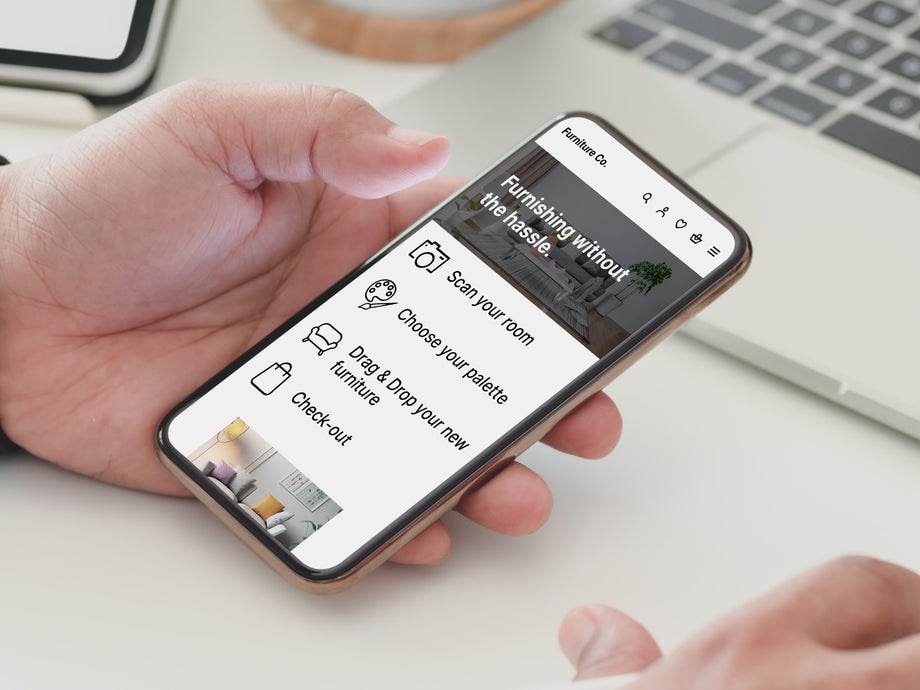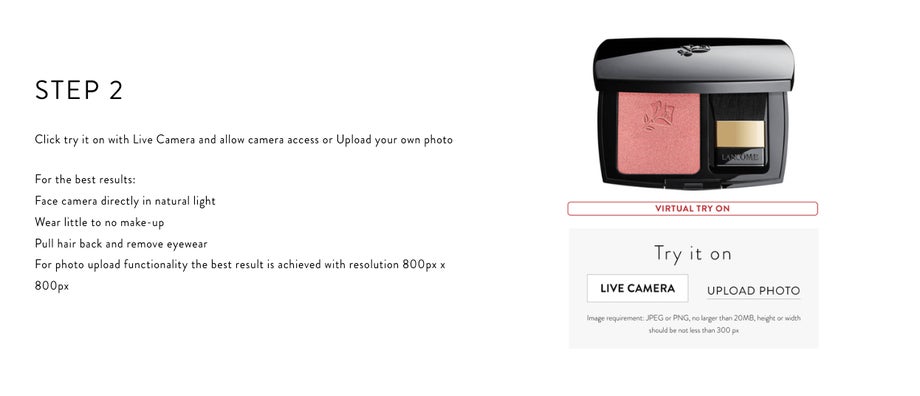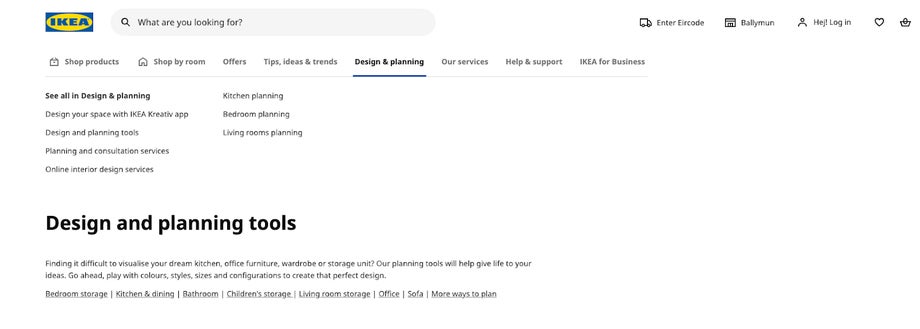
Arguably, a brand's most critical touchpoint with its customers is its online presence, with its website assuming the role of the cornerstone and the primary determiner of people's relationship with the brand.
For example, recently, I had a query about my house insurance, and despite it being out of hours, I assumed correctly that all I had to do was log into my account and get all the information and answers to the questions I needed. No waiting until the morning or a weekday. Today, we expect 24/7 access to brands.
And it’s not just about availability; it’s also about the digital experience. It’s 2024, and when people are online, they expect the experience to be convenient, easy and stress-free.
For consumers, it’s great, but for brands, it’s a lot of pressure.
How do you keep your website fresh, ahead of the competition, and on-trend while meeting business goals and delivering a great customer experience (CX)?
The future is always unpredictable, and short of having a crystal ball, we can only speculate but with a certain amount of certainty. First of all, there will be unknowns. Emerging technologies, like AI, will pose a threat to the status quo and have everyone jumping on the bandwagon to avoid being left behind.
However, there are some "knowns", functionalities and technologies that many brands are already implementing, and if you are not, then it’s time to consider them if you want to continue to attract and, importantly, keep visitors on your site.
Hyper-personalising the CX
While currently, your site should offer some level of personalisation, what is new is how personal it will get. AI and other technologies are upping the game, so it’s time to move beyond just using someone’s name and to start thinking about where the prospective customer is, the time of day, for example, and then have your dynamic content ready to make them feel the site is speaking directly to them. So, if I am searching for a coffee shop, not only will the ones closest to my location appear, but also the relevant opening times, if they meet my dietary requirements, and so forth.
Think about it as if it is Netflix’s “You might also like” on steroids. It is a tailoring of recommendations that will also consider other content the user has interacted with and produce the results they are looking for, not just what everyone searching gets. In other words, if I’m looking at an online bookstore, it will offer suggestions that resonate with me rather than just the latest top sellers.
Seamless CX
Voice-powered shopping is another level of convenience. You don’t even have to type or hold anything.
So yeah, it’s very popular and a growing trend.
According to some reports, more than 1 billion voice searches occur monthly; meanwhile, a recent Pure Telecom study shows that 72% of adults living in Ireland use voice search.
Consequently, it will come as no surprise that it’s a rapidly growing commercial sector, with the global voice search market size value estimated at over 3 billion euros in 2024.
So, the future is voice, and to endure your part of the pie, you have to make sure that your website is optimised for voice search.
There are several ways to ensure that your site is optimised for voice. Many of these are common sense—think about how we speak and ask questions- and create content that prioritises long-tail and conversational keywords. Your content plays a huge role in ensuring your website is voice-search friendly, particularly around making sure it pops up when someone asks a question.
For more on this and how to ensure you have the technical aspect covered, take a look at Voice Search Optimisation: 6 Tips to Improve your Results.
Designing for a better CX for everyone
Apart from the fact that it’s the law, making sure everyone can use your site is just good business sense. I mean, why would you want to exclude any potential customers?
Surprisingly, the number of sites in Ireland that fail to do so is relatively high. The 2023 Irish Digital Accessibility Index found that among the Irish Times' top 100 companies in Ireland, only 27 passed accessibility reviews, with an average of 11.5 accessibility issues recorded per site. That means 73 did not.
Ensuring accessibility involves numerous steps, beginning with an audit to identify issues and then taking action to address them. It’s an ongoing process, with every update and new feature added checked for compliance. But it’s an investment that is both necessary and commercially viable.
We do a lot of work around digital accessibility, and VisitDublin, one of our projects with Fáilte Ireland, is getting industry recognition for its application of Universal Design. One of our designers, André Goncalves, describes how we accomplished this in How to make your site accessible.
Additional resources
Enhancing the shopping CX
Obviously, this functionality will only apply to some websites, but it is essential if you sell clothes, makeup, accessories or footwear. The market for virtual fitting is predicted to quadruple to over €20 billion by 2032. According to Forbes, studies have shown that virtual try-on technology can boost sales by up to 30% and reduce returns by 20%, improving retailer margins. After introducing virtual try-on technology, the cosmetics giant Avon Products saw a 320% increase in conversions and a 33% increase in average order value.
Try before you fly
Most of us are guilty of making an impulsive purchase as we avail of the lower prices at the Duty Free on our way somewhere lovely (hopefully); sometimes, though, it can feel too rushed or too rash a decision, which is why the Dubin Cork Duty Free now offers you the opportunity to try it on before you even get to the airport.

Augmented reality is another way brands can improve the CX; for example, the eyewear company Marcolin launched an AR campaign for its Guess brand.
The campaign, designed to engage the 18-34 age range, featured two interactive ad formats: one that showcased a pair of Guess sunglasses in 3D and allowed users to virtually try them on; the other, a dynamic sequence of a promotional video, the 3D product, and the AR try-on.

Tech-enhanced CX
AI is everywhere, with applications that we’ve only begun to explore. In many ways, it is a natural fit for eCommerce, so unsurprisingly, the AI in eCommerce market size is expected to snowball in the next few years.
With applications that range from increasing
- the focus on customer data analytics
- the growing demand for AI-powered product recommendations
- the use of AI in supply chain management
- the use of AI in fraud management,
it will grow to almost €13 billion in 2028.
Some of the trends you can expect to see include:
- technological advancements in AI,
- voice commerce expansion,
- supply chain optimisation,
- AI-enhanced customer support
- and conversational eCommerce.
All of these work together to improve the CX and, of course, increase profits. I’m excited to see which brands adopt AI the fastest and how it will make my life easier.
Earlier this year, we worked with An Post and other partners to produce an AI-generated St Patrick’s Day card. The goal was to make it convenient for An Post's customers to design a custom AI card, which they could then send anywhere in the world, all from the comfort of their homes.

We’re also working on other projects that use AI to improve the CX - watch this space.
Further reading
360 CX
Again, virtual tours aren’t new per se, but they are growing in terms of application and user experience. Many real estate agents, as do schools and colleges, offer virtual tours of properties. But I see many uses for them in a B2B setting. Recently, a friend had to travel to China to complete tours of factories making Pilates machines—a trip that would have been much more convenient and cheaper had they been able to do it from the comfort of their home.
Such digital showrooms, or virtual showrooms, offer an innovative solution for brands and retail buyers to engage with and sell products through an online platform.
I recommend looking at What Is a Virtual Showroom? Software and Examples for 2024, as it provides an overview of 6 software to consider if you want to build a digital showroom and add it to your site.

Ikea is very active in this space and has this on their website.
Making the CX greener
Did you know that 3.7% of global greenhouse gas emissions are created by our smartphones, gadgets, the internet, and supporting networks and systems? And, of course, we can expect this number to increase as we continue to rely on digital more and more.
However, we know many consumers are concerned about environmental issues and will often choose brands taking proactive measures to be more sustainable. Therefore, it's up to us, the website owners, designers, and developers, to adopt a design approach that will help us accomplish this, and of course, it’s good for our planet.
Where to start?
Take a look at this blog, 10 ways to make your website more sustainable, and take the test to see how green your site currently is. Then, it’s about working with a green host and creating a website design strategy prioritising sustainability.
Wearables, VR headsets, oh my
Of course, you’ve considered your customer’s UX on your site… you made it a priority.
But have you considered the potential challenges if the user accesses your site through a VR headset or a wearable? How will they navigate the small screen and read the content?
Broadening the UX to include multiple devices does mean that you have to consider the following- or at least your designers or design agency does:
- Responsive design - Will the design change its layout and content according to the device’s screen size, shape, and orientation?
- Adaptive design - Does your website have different versions for different devices?
As a designer, I’m acutely aware that not all brands remember this, and I’ll avoid using the site if I use my smartwatch.
My tips for designers include:
- Avoid unnecessary elements
- Choose fonts that are easy to read
- Use short and clear messages to communicate with the user.
Prioritising security for your customers
As our tech gets more sophisticated, so do the hackers. No one wants a data breach or customers to feel unsure about submitting their details, especially payment information. The good news is that brands have plenty of options, and more always come onto the market. I think we’ll see blockchain technology grow in its application for site security purposes.
A recent Forbes article examined in detail the many ways blockchain is being used to increase security.
“To enhance data protection, blockchain introduces a new privacy model as an overlay network. It employs cryptographic hashes for robust data verification and operates on a distributed public and permissionless network framework. These features collectively ensure the immutability, reliability and transparency of data, fostering a secure digital environment where data manipulation becomes nearly impossible and trust in digital records is significantly bolstered.”
In one of our recent posts, we offer some recommendations that you ought to deploy now, including some tips from Peter Fogarty, Senior Sales Executive at Ekco, one of our partners. Ekco provides a full suite of managed cloud solutions to solve cloud, business continuity, security, and workspace challenges.
Making the CX more interactive
Everyone talks about our diminishing attention spans and scroll fatigue. So, attracting and retaining people’s attention is getting harder. But this ad did when it recently caught my eye for its exemplary use of mixed media and its powerful message.
I’d like to see more of this on sites, particularly those targeted at specific demographics that are more receptive to a little bit of chaos.
Consider this: What site caught your attention recently, or one that you found yourself lingering on longer than usual? You might have noticed more brands incorporating gamification elements onto their sites.
For example, last year, Sephora offered its Beauty Insider loyalty program members the chance to earn more points through gamified experiences. Called “Beauty Insider Challenges,” it comprises both tasks that require purchases and tasks that do not, and they’re available to all membership tiers. The first Challenge, called “Ready, Set, Sephora,” is comprised of four tasks, including checking out with buy-online, pick-up in-store; signing up for Sephora text alerts; adding samples at online checkout; and trying Sephora’s in-store shade-matching tool, Color iQ. All Beauty Insider members can earn 100 points for each completed task and an additional 100 bonus points for completing the entire Challenge. Completing the full Challenge allows
Broadening the CX for improved ease of shopping
Are we getting too comfortable letting technology do the work for us?
Maybe, but again, it’s another tool that makes it easier for shoppers to find what they are looking for by simply taking a photo with their smartphone. The search will identify the item, tell you where to buy it, and find similar or related products for comparison.
If you have not already integrated visual search into your site’s capabilities, it’s time to start.
This blog has some useful information that will give you a little more insight into how to offer this service.
As I’ve stressed to our clients and will continue to do so, the customer should always be the focal point of our decisions. From the instant a visitor arrives on your site, they assess their experience. If it doesn't meet their expectations, we lose. We must consistently ask ourselves, "How will this impact the customer?" and "What more can we do to enrich their experience?" This customer-centric approach truly values our customers and their experiences.
If we keep asking this question and keep our eyes on the end user, the customer, you will keep innovating and stay ahead of your competition.

Whether it's eCommerce, insurance or logistics, the user should be at the centre of your digital strategy.



